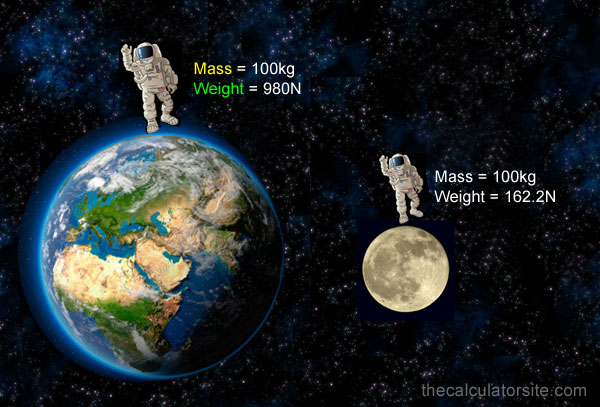
When, in my last passion blog, I said that the USCS weight measurements are a mess I was not joking. Today, we are going to explore this convoluted portion of the United States’ measuring system, so hold on tight.
To begin, we will have to establish whether we are talking about mass or weight. Remember from middle school that mass measures the sheer amount of matter in an object. So, an apple that has a mass of 2 units has twice as much matter than an apple that masses 1 unit. In the SI system, the kilogram is the unit of mass.
Now, weight is defined as the force of gravity acting on an object. Newton’s second law says that force equals mass times acceleration, so weight is an object’s mass times the acceleration of whatever planet it is on (usually Earth). This leads to the fact that weight changes while mass stays the same. In the SI, the unit of force is the Newton, which is derived as:
1 N = 1 kg * 1 m / 1 s / 1 s
Notice that all the numbers in this equation are ones. This makes calculations very simple. A 2 kg box on Earth (acceleration = 9.8 m/s^2) has a weight of:
2 * 9.8 = 19.6 N
When someone steps onto a scale, the machine measures their weight and then “divides” by acceleration to read off their mass. This is all fairly straightforward.
However, if you ask many Americans for the US unit of mass, they would say the pound. Then for weight they would also say the pound. Thus, most Americans use the pound-force (lbf) to measure weight (or more generally force) and the pound-mass (lbm) to measure mass. This is the first problem with the US mass and weight system: it is incoherent. This is a technical term which denotes the fact that conversion factors between basic units use values other than ones. In the USCS:
1 lbf = 1 lbm * 1 ft / 1 s / 1s * 32.174
This jarring 32.174 is the gravitational acceleration in ft/s^2. This extra conversion factor is convenient on one hand. A 1 lbm apple on earth weighs about 1 lbf. This harkens back to the medieval origins of these units, when we did not understand the difference between weight and mass. Unfortunately, this makes math extremely complicated as you are required to throw in random 32.174’s into your work. To avoid this, US engineers use either the mass-base subsystem or the force-base subsystem.
Force-base
This subsystem uses the pound-force as its basic unit and derives the slug as the unit of mass with:
1 slug = 1 lbf * 1 s * 1s / 1 ft
In other words, mass equals force divided by acceleration. This is what you will encounter in most of your PSU engineering courses. Personally, I am not such a fan of this system because it is the pound-mass that forms the bridge between the USCS and SI. By international law, the lbm is defined in terms of the kilogram, so I think we should be using the lbm as the basic mass unit. Using 1 slug = 32.174 lbm simply pushes the USCS further from the SI.
Mass-base
The mass-base system fixes what I just described by keeping the pound as a unit of mass and deriving a new unit of force, the poundal. Here:
1 pdl = 1 lbm * 1 ft / 1 s / 1 s
I have never seen or used this system, but one of my engineering professors has. As to why the majority of US engineers use the force-base over the mass-base, I cannot say. It is extremely difficult to find in-depth, online literature concerning the USCS, and this is a question to which I have not yet found the answer. If I had to guess, it would be that engineers were reluctant to change units like psi (pound-force per square inch).
At this point, I am over the word count, so I will save the second issue for the next blog. As a teaser, if you ever buy an ounce of gold, then mass it on a scale at home, you probably will think the broker gave you more gold than you paid for. Until then.
I am once again astonished by the disheveled way our system of measuring works. I honestly thought a standard for measuring ESPECIALLY a UNIT would be very exact, logically sound, and “not messy.” However, you have surprised me once again while talking about the USCS mass and weight.
Again a very interesting post! I can completely relate with your post because this was my exact argument against the USCS when I first came to USA and got to know about this new system of units. I also thought that this system made the calculation complicated and thus these system of unit was completely unnecessary. You made a really good argument by showing the proofs with calculations. Really excited to read your next blog!